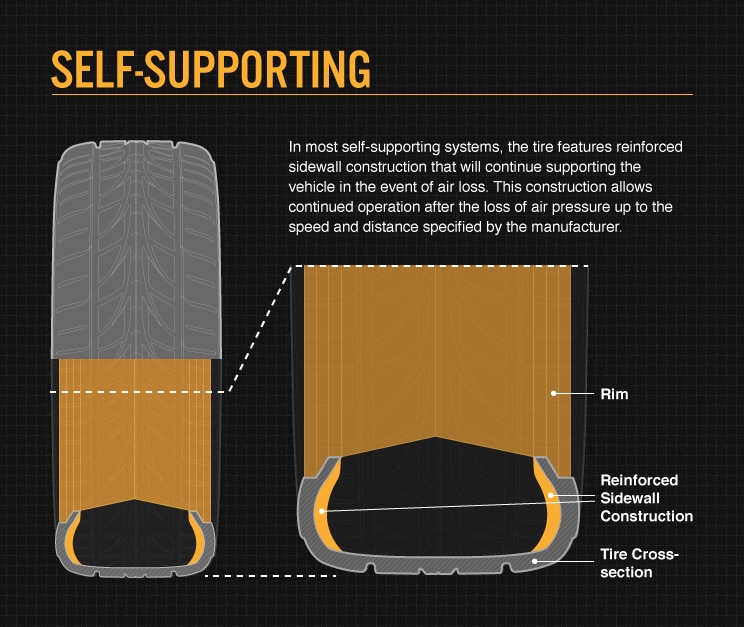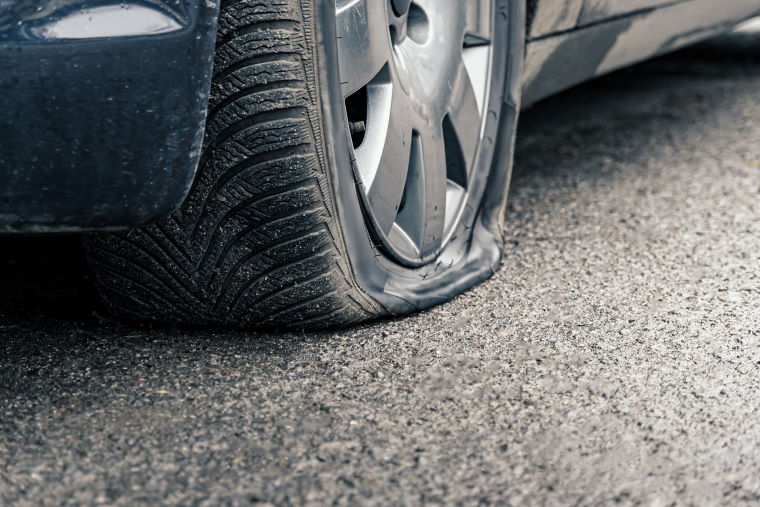To tell if a run-flat tire is punctured, inspect for any visible damage, such as cuts or tears in the sidewall or tread area. Check for a loss of air pressure or a bulging or protruding section on the tire.
Run-flat tires are designed to be puncture-resistant, but they can still suffer damage. Understanding how to identify a puncture is crucial for maintaining your vehicle’s safety and performance. By recognizing the signs of a puncture early on, you can prevent further damage to the tire and ensure the proper functioning of your vehicle’s run-flat system.
This article will guide you through the steps to determine if your run-flat tire has been punctured and what actions to take in response.
Identifying Punctures In Run Flat Tires
Visual Inspection: When checking for punctures in run flat tires, start by visually inspecting the tire carefully. Look for any visible signs of damage, such as nails, screws, or sharp objects embedded in the tire. Examine the tread thoroughly for any cuts, tears, or bulges, as these can also indicate a puncture or potential damage. Ensure the tire is properly inflated, as low tire pressure can sometimes mimic the symptoms of a puncture.
Checking Tire Pressure: It’s important to regularly check the tire pressure of your run flat tires. Proper tire pressure not only ensures safety but can also help identify if a tire is punctured. If a run flat tire consistently loses air pressure despite no visible signs of damage, it could be an indication of a slow leak or puncture. Use a reliable tire pressure gauge to measure the pressure and compare it to the recommended pressure mentioned in the vehicle’s manual or on the tire sidewall.
Regular inspections and maintenance are essential to identify punctures in run flat tires early on. By conducting visual inspections and checking tire pressure regularly, you can stay proactive and ensure the safety and performance of your run flat tires.
Symptoms Of A Punctured Run Flat Tire
Loss of Tire Pressure: Ensure to check for a sudden drop in air pressure, leading to handling difficulties.
Unusual Noise or Vibration: Look out for unusual vibrations or noises while driving, as they are indicators of a punctured run-flat tire.
Difference In Handling
When checking for a punctured run-flat tire, one can notice a difference in steering responsiveness. If the tire is punctured, the vehicle’s stability can be compromised, potentially leading to an unsafe driving experience. It is important to monitor the handling of the vehicle to detect any abnormalities that may indicate a puncture in the run-flat tire. Addressing this issue promptly can prevent further damage and ensure safe driving conditions.

Credit: www.bridgestonetire.com
Utilizing Tire Monitoring Systems
Run flat tires are designed to withstand punctures and allow you to continue driving for a short distance until you can safely reach a tire repair facility. However, it’s crucial to be able to tell if a run flat tire is punctured to prevent further damage to your vehicle and ensure your safety on the road.
Utilizing tire monitoring systems can help you detect any issues with your run flat tires. These systems track the tire pressure and temperature, providing you with alerts and warnings when abnormalities are detected. Understanding these alerts and warnings is essential in identifying a potential puncture.
Interpreting sensor readings is another crucial step in determining if a run flat tire is punctured. Sensor readings usually display the air pressure and temperature of each tire. If you notice a sudden drop in pressure or an unusually high temperature in a specific tire, it could be a sign of a puncture.
Regularly checking your tire monitoring system and interpreting sensor readings can help you quickly identify a punctured run flat tire and take the necessary steps to rectify the issue, ensuring your safety and peace of mind on the road.
Taking Action In Case Of Puncture
If you suspect a puncture in your run-flat tire, inspect it visually. Look for noticeable damage or signs of deflation such as bulges or tears. If you notice any abnormalities, do not attempt to continue driving on the tire. It is crucial to take immediate action to prevent further damage and ensure safety on the road. In case of a puncture, follow emergency procedures outlined by the tire manufacturer. If you are unsure or uncomfortable with handling the situation yourself, seek professional assistance promptly. Remember, proper maintenance and swift response can make a difference in maintaining your vehicle’s performance and your safety.

Credit: m.youtube.com

Credit: www.kwik-fit.com
Frequently Asked Questions On How To Tell If Run Flat Tire Is Punctured
How Do You Know You Have A Puncture With Run Flat Tyres?
You know you have a puncture with run-flat tires when the tire pressure drops significantly.
Can I Drive On A Punctured Run Flat?
Yes, you can drive on a punctured run flat tire. However, it is recommended to go at a reduced speed and limit your driving distance. It’s advisable to get the tire inspected and replaced as soon as possible to prevent any further damage.
What To Do If Run-flat Tire Is Punctured?
If your run-flat tire is punctured, drive no more than 50 miles at a speed under 50 mph. Visit a tire professional for repair or replacement. Check for any visible damage on the tire and avoid driving on a completely deflated run-flat.
How Do You Know When Run-flat Tires Need Replacing?
You’ll need to replace run-flat tires if they have punctures or sidewall damage. Inspect for visible signs of wear such as cracks, bulges, or low tread depth. Professional evaluation is crucial for accurate assessment. Regularly check tire pressure to ensure proper maintenance.
Conclusion
With these signs to look out for, identifying a puncture in a run-flat tire can save you from potential hazards on the road. From loss of pressure and unusual vibrations to visual cues like nails or cuts on the tire surface, keeping an eye on these indicators is essential.
In case of doubts, always consult a professional for an accurate diagnosis and prompt resolution. Stay safe and ensure the longevity of your run-flat tires.
{ “@context”: “https://schema.org”, “@type”: “FAQPage”, “mainEntity”: [ { “@type”: “Question”, “name”: “How do you know you have a puncture with run flat tyres?”, “acceptedAnswer”: { “@type”: “Answer”, “text”: “You know you have a puncture with run-flat tires when the tire pressure drops significantly.” } } , { “@type”: “Question”, “name”: “Can I drive on a punctured run flat?”, “acceptedAnswer”: { “@type”: “Answer”, “text”: “Yes, you can drive on a punctured run flat tire. However, it is recommended to go at a reduced speed and limit your driving distance. It’s advisable to get the tire inspected and replaced as soon as possible to prevent any further damage.” } } , { “@type”: “Question”, “name”: “What to do if run-flat tire is punctured?”, “acceptedAnswer”: { “@type”: “Answer”, “text”: “If your run-flat tire is punctured, drive no more than 50 miles at a speed under 50 mph. Visit a tire professional for repair or replacement. Check for any visible damage on the tire and avoid driving on a completely deflated run-flat.” } } , { “@type”: “Question”, “name”: “How do you know when run-flat tires need replacing?”, “acceptedAnswer”: { “@type”: “Answer”, “text”: “You’ll need to replace run-flat tires if they have punctures or sidewall damage. Inspect for visible signs of wear such as cracks, bulges, or low tread depth. Professional evaluation is crucial for accurate assessment. Regularly check tire pressure to ensure proper maintenance.” } } ] }